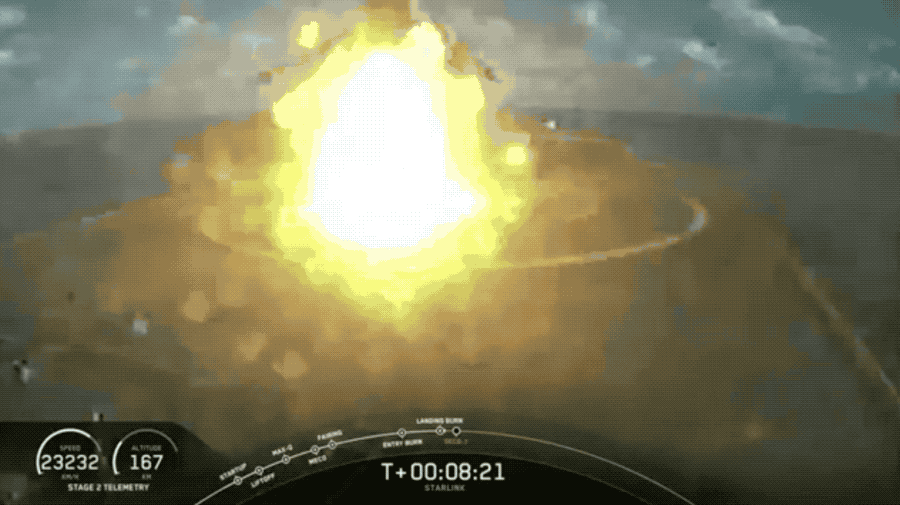SpaceX has launched yet another batch of 60 Starlink satellites – its third production batch of the orbital communication spacecraft, and its second batch this year alone. The launch took off from Cape Canaveral Air Force Station in Florida this morning at 9:06 AM EST, using a Falcon 9 rocket whose booster stage had already flown twice before, for two prior SpaceX missions in 2019.
SpaceX also recovered the Falcon 9 booster yet again, landing it back on its drone landing ship in the Atlantic Ocean after it separated from the payload and the rocket’s second stage. At this point, SpaceX’s ability to recover its Falcon 9 boosters is pretty reliable – it has succeeded in 48 of 56 landing attempts overall, and the last time a Falcon 9 landing attempt went awry was in December of 2018.

The deployment of the Starlink satellites on board the Falcon 9 is coming up in about 40 minutes (we’ll update this post with how that goes), meaning SpaceX will then have around 240 satellites in service for Starlink. Already after the last batch went up, SpaceX became the largest private satellite operator in the world, and now it’s just extending its lead.
Its continued launches of batches of these satellites put it on track to launch actual broadband internet service for customers in the U.S. and Canada this year, a timeline shared by SpaceX COO and President Gwynne Shotwell. It’s aiming to launch at least half a dozen more batches of satellites before the end of this year, and it should be able to provide global service after an estimated 24 launches in total.
SpaceX has been criticized by astronomers for the effect its constellation is having on night sky observation from Earth, but it says its taking measures including experimenting with a darkening treatment on the side of its Starlink satellites that face Earth. Today, the company said its still evaluating the results of a test satellite equipped with that coating it sent up last launch, and will provide updates when it has analyzed the results.
Once it has enough satellites to provide coverage, Starlink will provide high-speed internet (capable of delivering smooth video calls and streaming) to areas that previously have not had access to this kind of service. This includes remote locations, as well as cruise ships and airplanes, SpaceX says.
This launch today included an attempt to recover both halves of the fairing, a protective covering that shield the payload during the rocket’s launch. Those return to Earth once the launch vehicle reaches space, and SpaceX is attempting to catch them using ‘Ms. Tree’ and ‘Ms. Chief,’ two ships that are equipped with large nets. Catching these as they descend aided by parachutes could potentially save SpaceX as much as $6 million per launch, adding yet another re-usable component to the system in addition to the Falcon 9 first stage booster.
from TechCrunch https://ift.tt/311Seuy
via IFTTT
Comments
Post a Comment